How to Design and Write a High-Converting Product Page

Source: depositphotos.com
According to Oberlo, the average conversion rate ecommerce businesses achieved in February 2023 was 1.64%. Of course, the exact numbers may vary based on industry and product types. Either way, it’s safe to say that having approximately 98% of your website visitors walk away from your site without making a purchase isn’t ideal.
Fortunately, there are numerous tricks you can employ to boost conversions. Many of these can be applied to your product pages, where a good portion of buying decisions are made.
So, if you’re looking for strategies that will help you boost your site’s CR, here are the best tips on how to design and write a high-converting product page.
Prioritize High-Quality, Relevant Product Information
One of the most effective ways to improve product page conversion rates is to evaluate your product descriptions. Then, make any necessary changes so the copy is well-written, relevant, and perfectly tailored to attract your target audience’s interest and convince prospects to invest in your solutions.
Generally, you can boost ecommerce sales via product descriptions by adhering to a few ground rules:
Prioritize the Customer Experience
The only guaranteed way to make a sale is to convince your buyers that you offer a product that can solve their pain points. So, if you are to write copy that sells, you first have to fully understand your audience, their frustrations, and the type of sales approach they would feel comfortable with.
For instance, if you check out the example from Moncler, you’ll see that the product description states that the shorts were “designed for roaming the great outdoors,” which is precisely what potential buyers want to do with the item. Moreover, the description mentions the materials used in the construction, the relevant features — like the zipped pockets — as well as the main benefits of the product, which include breathability, water repellency, and windproofing.
 Source: moncler.com
Source: moncler.com
Maximize Readability
The second piece of advice you should follow when writing product descriptions is to pay attention to the readability score.
Generally, copywriting experts suggest that you make web copy as accessible as possible. This means avoiding lengthy sentences, jargon, and blocks of text. Instead, keep product explanations simple and short.
Whenever possible, opt to convey information via visual formats. For a great example, check out the photos used on Bay Alarm Medical explaining the ins and outs of medical alert systems.

Source: bayalarmmedical.com
Stay True to Your Brand’s Voice
Remember, your brand’s voice plays a significant role in attracting customers. To prevent disappointments (and consequent page bounces), guarantee that what got people to click on your product pages is the same thing that makes them stay. Don’t shift gears or try to suddenly position your company as something it’s not.
Instead, stay true to who your target audience expects you to be and roll with it till the end — even if it means composing non-traditional product descriptions, like the ones used on the dbrand site.
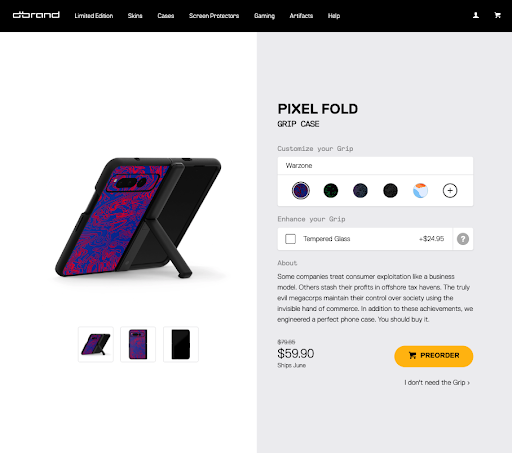
Source: dbrand.com
Optimize the Page Layout
Research shows that 79% of internet users don’t read online. Instead, they skim web pages searching for information relevant to their experience. But what’s super-interesting is that they do so following a few pre-determined reading patterns.
So, knowing that the people who land on your product pages are most likely to skim, you need to ensure that the page layout allows them to do this.
One way to achieve the desired effect is to meet consumer expectations. Generally, you won’t go wrong if you place product photos on the left of the page and position the description and CTAs on the right, as they did on the Lorenzi Milano page below.
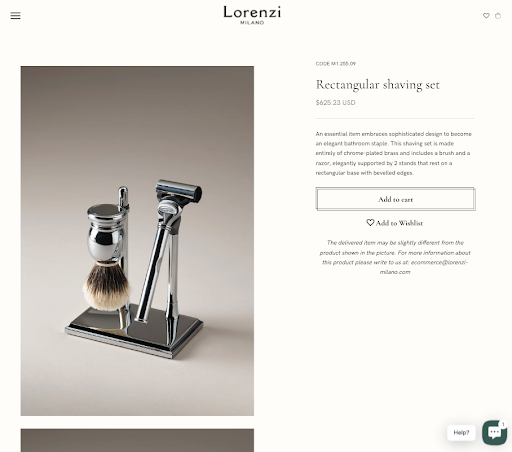
Source: lorenzi-milano.com
Then, if you want to take a step further and make the layout even more user-friendly, consider breaking up all of the text into bullet points. This strategy is commonly used on Amazon, for example. You can even break up the page into several sections, with each one addressing a different buyer concern (like shipping, item care, and returns policies).
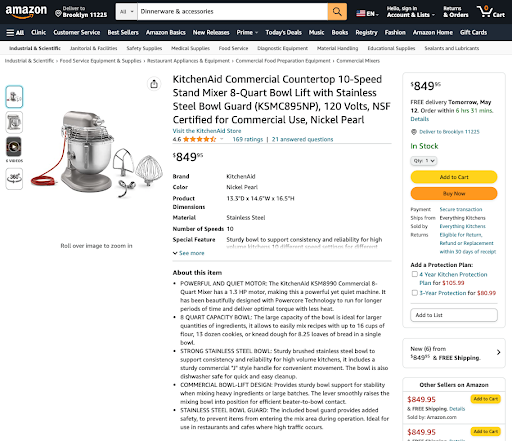
Source: amazon.com
Use High-Quality Product Photos and Videos
Visuals play a huge role in convincing consumers to convert. So, if you want to boost sales on your ecommerce website, it’s only natural that you should explore ways to maximize the effectiveness of the product photos you employ.
Now, while the prospect of DIY-ing product photography may seem daunting, scientific research suggests that you can follow a few rules to ensure that the images appeal to consumers.
According to research studies, buyers prefer product images with a large key object, low entropy, warm color hues, high contrast, high depth of field, and social presence. And, if you check out Zara Home, you’ll see that these are all rules that are considered by the brand’s design team when choosing product photos.
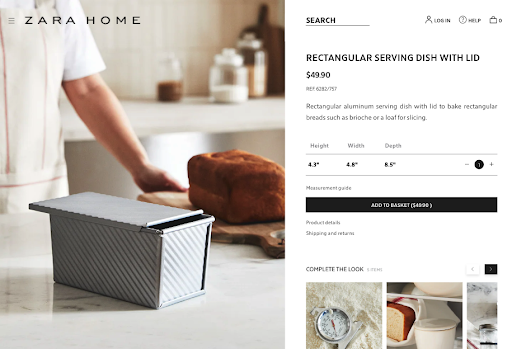
Source: zarahome.com
Of course, product photography is not a 1-2-3 process you can follow to a T. That’s why it’s also crucial to consider the role these images play in describing what your product does and how it can benefit your potential customers.
For instance, if you check out PresetLove, you’ll notice that the brand chooses to show off its presets in action, using before and after pics to ensure that buyers know what they’ll be getting with each pack of LightRoom filters offered in the store.
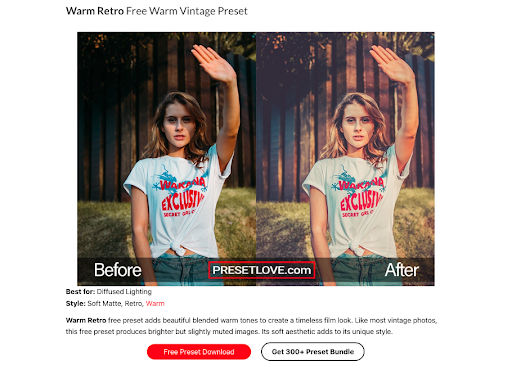
Source: presetlove.com
Furthermore, it’s also not a bad idea to find ways to incorporate videos on product pages — especially seeing that 89% of consumers say they’ve been convinced to invest in a product or service by a video. Check out the example from Adidas below.
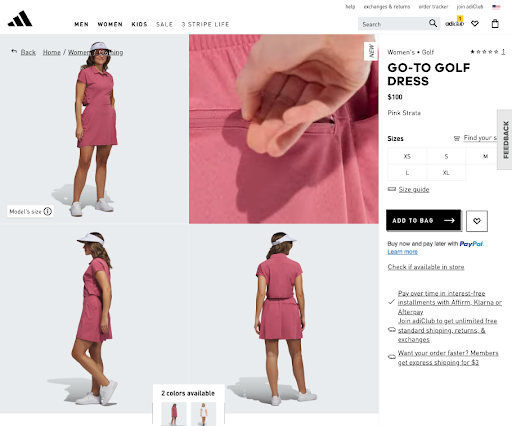
Source: adidas.com
Incorporate Trust Elements
When considering product page design strategies that have the potential to lift conversions, remember that brand trust is one of the main factors people consider when making buying decisions. So if you’re trying to boost ecommerce sales, you need to play around with trust elements. Their purpose is to show your audience that they can rely on your brand to deliver high-quality products and next-level customer service.
Naturally, the easiest way to incorporate trust-driving elements on product pages is to show off social proof. Something as simple as displaying product star ratings and the number of reviews the item has received — as shown on SomniFix — is an excellent start.
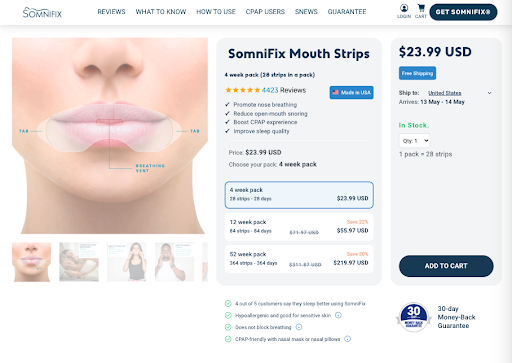
Source: somnifix.com
Alternatively, you could employ trust badges like the ones used on Dress Forms USA. This brand utilizes a combination of text and visuals to prove to buyers that it’s a highly-credible business, promising fast shipping, exceptional customer support, money-back returns, and secure payments.
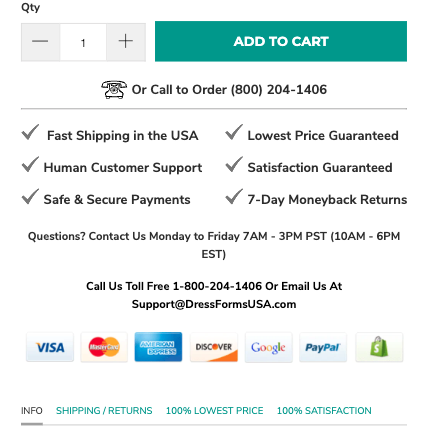
Source: dressformsusa.com
Or, you could take things a step further by enhancing product pages with customer story highlights. Take a look at how they did it on Slack.
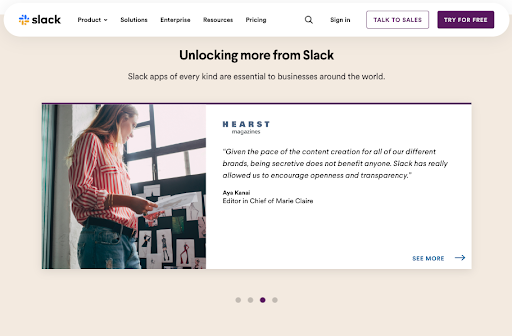
Source: slack.com
Enhance the User Experience
Finally, as you explore ways to improve conversion rates on product pages, don’t forget that one of the best ways to convince your prospects of brand and product credibility is to deliver a super-enjoyable user experience. And the great news is that there are several great ways to achieve it.
For example, covering the basics of good web design by ensuring that all product pages load fast and display properly on mobile devices will instantly boost product page conversions.
But there are also more advanced design strategies you can implement to enhance the UX.
One great way to impress web visitors is to simplify the shopping process with one-click checkout or a subscription option like the one used on the Floe site.
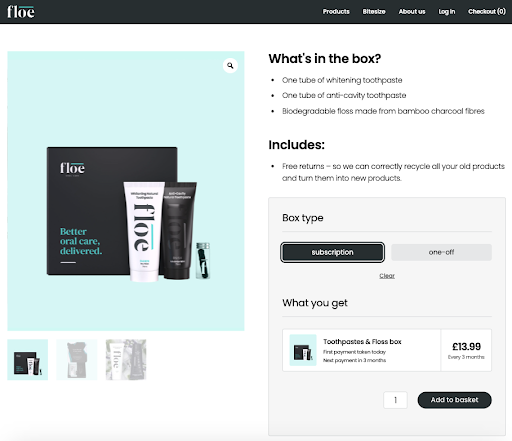
Source: getfloe.com
Or, if you know that your customers regularly buy multiple products at the same time, you can employ cross-selling techniques — as done by Vivion — to help them get everything they need to get the most out of your solutions.
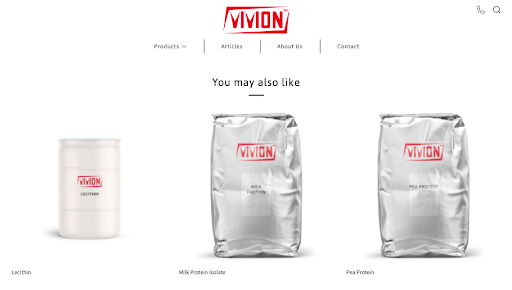
Source: vivion.com
And if you genuinely want to create the best possible user experience on your product pages, don’t forget about consumer frustrations that cause them to abandon purchases. Knowing that 16% of cart abandonments happen due to unpredicted shipping costs/fees, why not enhance your product pages with UX features that will allow your customers to know exactly how much they’ll spend on their order?
There are several ways to do this, but if you check out the Castlery site, you’ll see that clicking the “add to cart” button on the brand’s product pages triggers a cart pop-up summary, which includes, amongst other things, information about shipping fees and payable taxes.
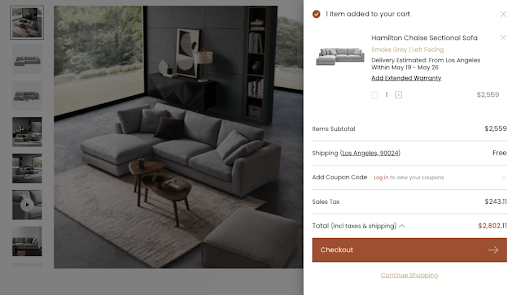
Source: castlery.com
Final Thoughts
As you start thinking of ways to design and write high-converting product pages, rest assured that the strategies described in this guide will get you far.
But no matter which tactics you decide to employ, remember that the single best way to boost sales is to perfectly meet your audience’s expectations. So don’t skip the process of doing proper consumer research, defining buyer personas, and tracking product page performance. These steps will be the key to achieving impressive conversion rates in 2023 and beyond
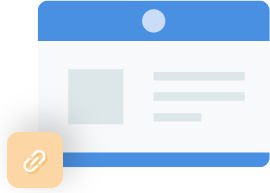
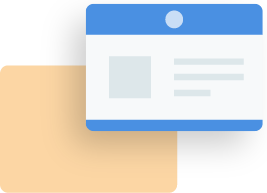
 info@cultbooking.com
info@cultbooking.com  0049 30 726225 0
0049 30 726225 0 